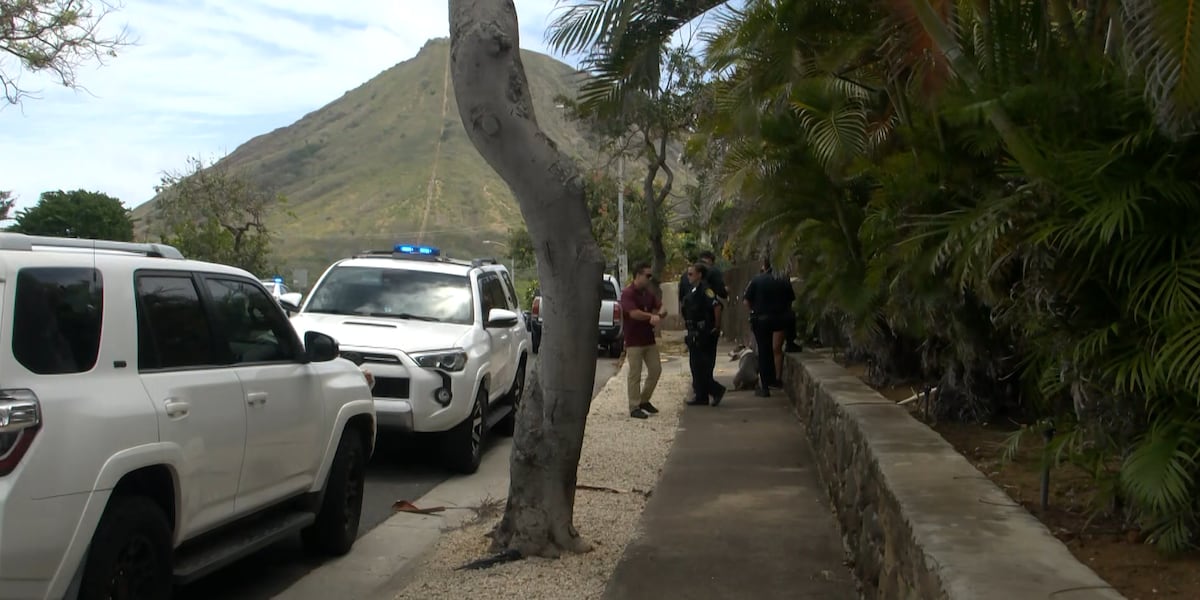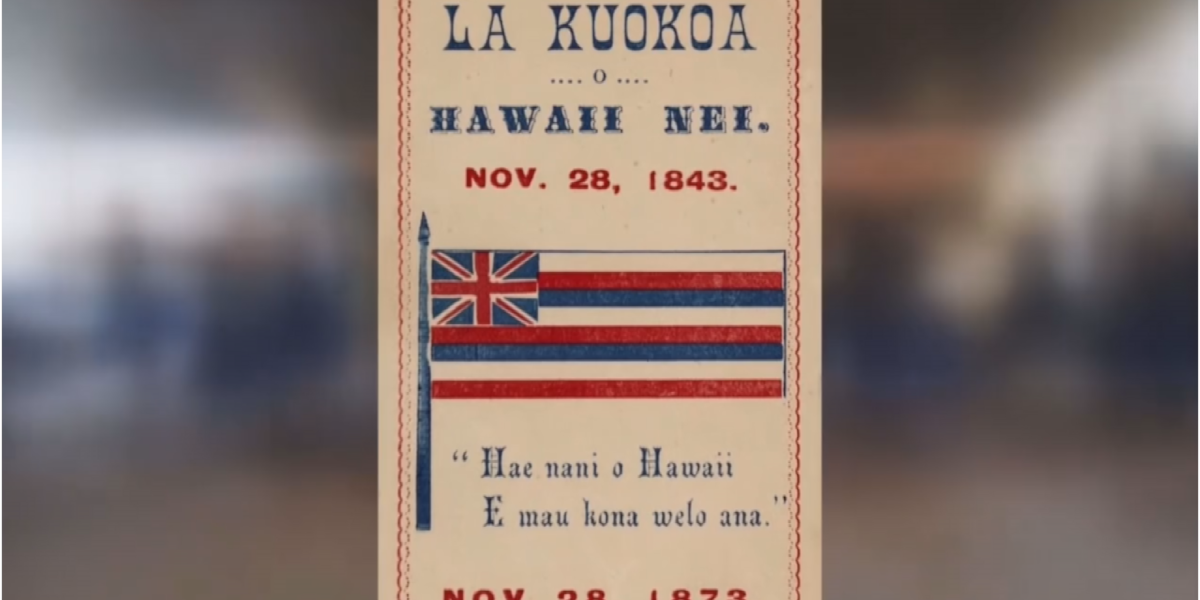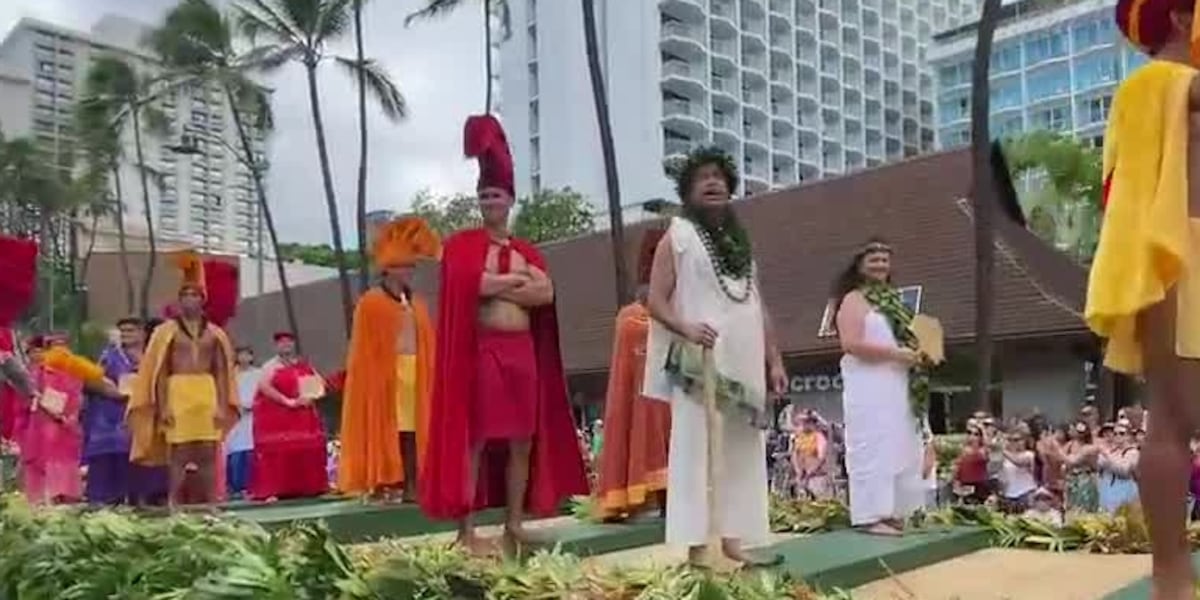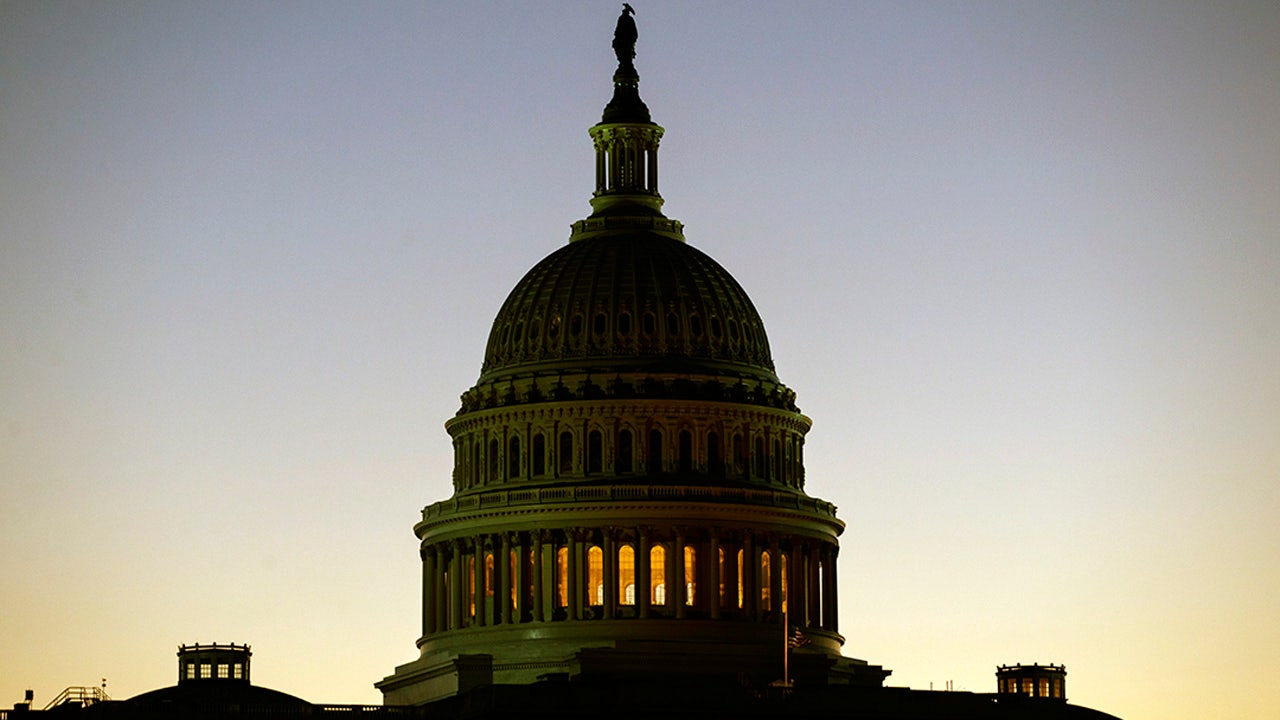Hawaii
High-rise Hawaiian Home Lands project could be first of many, but not everyone is on board
/cloudfront-us-east-1.images.arcpublishing.com/gray/J7NGIGFVK5B3HMBA5NJERST7WM.png)
HONOLULU (HawaiiNewsNow) – Native Hawaiians are divided over the first-ever rental high-rise to be built by the state Department of Hawaiian Home Lands — exclusively for beneficiaries.
The $137 million project on 820 Isenberg St. is a redevelopment of the old Stadium Bowl-O-Drome property, which had remained unused since the bowling alley’s closure in 2004.
The 23-story high-rise will have street-level commercial space and 278 rental units, ranging from studios to three-bedroom townhouses. All rental units will be reserved for DHHL beneficiaries.
The project functions as a temporary housing solution for Native Hawaiians on the waiting list for a DHHL 99-year homestead lot.
The only way we could really make or maximize the use of land was to build up.”
While living in the high-rise, Native Hawaiians will maintain their status on the waitlist.
The milestone project has sparked discourse at both the city and state level. A Honolulu City Council committee Wednesday endorsed the plan for final council approval.
Onlookers say as land runs scarce for traditional DHHL land plots, 820 Isenberg is the beginning of what could be a high-rise future for Native Hawaiian housing.
“While we are being very aggressive and doing the typical residential developments, especially on the Leeward Coast and coupled with some others in the urban area, it has been a real challenge,” said Kali Watson, director of the Department of Hawaiian Home Lands.
“The only way we could really make or maximize the use of land was to build up.”
According to the DHHL, 14 out of 20 projects most recently approved by the Hawaiian Homestead Commission involve vertical construction, though that could be subject to change.
Of the 2,700 DHHL housing units slated to be constructed, 2,400 of them are vertical.
820 Isenberg is also a project spotlighted by Gov. Green’s housing emergency proclamation, designed to streamline housing construction, including on Hawaiian Home Lands.
There are some 29,000 applicants on the DHHL waitlist.
The emergency proclamation says Native Hawaiians, on average, spend 23 years on the waiting list; what’s more, Native Hawaiians make up 40% of the state’s houseless population.
Paul Kema, who lives with his family in the Kalawahine Homestead in Punchbowl, was excited after hearing the conceptual plans of 820 Isenberg.
Referencing the landmark settlement that granted $328 million to DHHL beneficiaries who have spent decades on the waitlist, Kema says it’s time for new housing solutions for Native Hawaiians.
Other Native Hawaiian housing leaders alike commended the rental high-rise for providing alternatives, albeit temporary, to beneficiaries.
“With 20,000 — almost 30,000 — Hawaiians waiting, we have to be innovative,” said Council for Native Hawaiian Advancement CEO Kuhio Lewis.
RELATED COVERAGE:
“You can’t just keep doing the same thing and hope for different outcomes.”
If not enduring disproportionate housing burdens in their own backyard, Lewis warns that Native Hawaiians are increasingly being priced out of paradise.
The massive flight of natives and locals out of Hawaii, he says, was his impetus for hosting the 2023 Native Hawaiian convention in Las Vegas rather than Hawaii.
“If there’s an opportunity to go upwards in Honolulu and make something out of this parcel, why not? For me, it’s just making sure we approach it correctly,” said Lewis.
“So we don’t run over the work that our kupuna advocated for.”
Some beneficiaries, however, believe the new project fails to achieve the DHHL’s mission of developing land for Native Hawaiians.
Puni Kekauoha, senior vice president of Kula No Na Poe Hawaii, a Native Hawaiian organization that serves Papakolea beneficiaries, maintains the high-rise project is a grave departure from the tradition of Hawaiian Home Lands.
“We had this granted on land — not on a condo, not on an apartment. I can’t even imagine deciding who to give as a successor to an apartment. I’m taken aback,” said Kekauoha, herself a Papakolea Hawaiian Home Lands beneficiary.
Kekauoha added the 1920 Hawaiian Home Commission Act, which granted Native Hawaiian families land to attain self-determination, cannot be fulfilled by a rental high-rise unit.
Organization CEO CEO Adrienne Dillard agrees.
“When you are a renter, you lose the autonomy that you get as a homeowner. So there are other considerations when people will be in rentals that impact a Hawaiian way of life,” said Dillard.
Longtime affordable housing advocate and beneficiary Blossom Feitera understands the necessity to have rental units as an option, but also believes it falls short of the legacy of DHHL.
“Rentals should never be the forever home for people, they should choose where they want to go and fulfill a dream if owning a home is that dream. If not, our people are leaving Hawaii for something better,” said Feitera.
The Department of Hawaiian Home Lands acknowledged that the smaller rental units are not conducive to the clientele of often multi-generational Native Hawaiian families, and will carry heightened cultural awareness to this development.
“We need to be sensitive because high-rise living doesn’t necessarily align with our cultural perspectives. There’s a lifestyle change—living in a condominium, you don’t have as much privacy, or have the open space benefits, the yards,” said Watson.
Meanwhile, those on both sides of the issue are watching the governor’s emergency proclamation for housing with caution optimism, especially in regards to creating housing for Native Hawaiians.
“We will have a role in helping to support both sides — the ones that are concerned about the impacts on long-standing laws that protect our archaeological sites, our iwi kupuna,” said Lewis, on behalf of the Council for Native Hawaiian Advancement.
Before the pandemic, Kula No Na Poe Hawaii had worked closely with DHHL in the pre-development phase of 820 Isenberg, including the selection of the high-rise’s developers, Stanford Carr Development and Hawaiian Dredging.
Now, the organization urges the DHHL to do more so that the project can fully serve its beneficiaries. For example, they’d like the commercial space to showcase Hawaiian businesses.
In response to regulatory concerns, the DHHL said many of the 20 commission-approved projects are still undergoing environmental review, and two currently have issues with historic preservation.
Feitera similarly calls on the DHHL for further consultation with indigenous communities, specifically with waitlisted beneficiaries.
“Right now, the community in general understands that there’s going to be an apartment,” Feitera said. “It’s going to be a high-rise — but, what else?”
Copyright 2023 Hawaii News Now. All rights reserved.

Hawaii
Hawaii Set to Host First State Surfing Championship in 2026
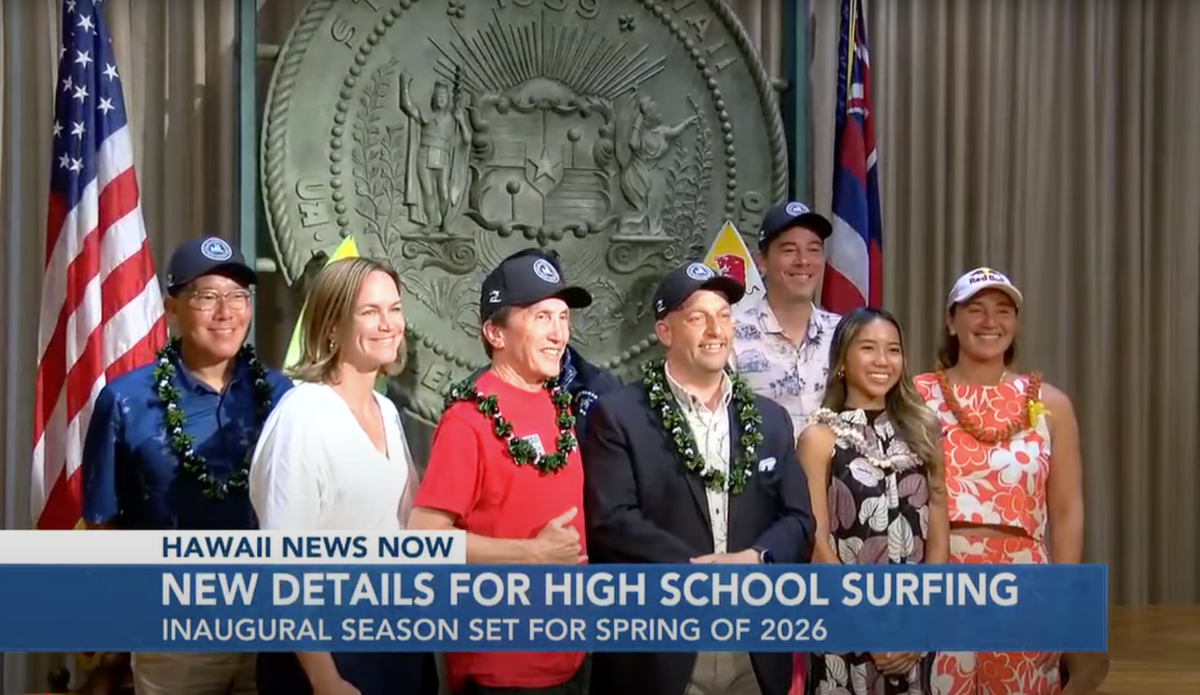
Hawaii Governor Josh Green was joined by Carissa Moore Monday to announce the 2026 Hawaii High School Athletic Association (HHSAA) surfing competition. The contest will be held at Hookipa Beach on Maui’s north shore on May 1 and May 2 and will cap off the first school year in which surfing is an official team sport at the prep level in the Aloha State.
HHSAA announced that surfing would be added to its spring 2026 schedule back in July after Gov. Green signed a bill providing $685,000 in funding for the state’s interscholastic leagues. Prior to that, athletes like Carissa Moore were left with traveling to compete as individuals representing their schools in NSSA events.
“It would’ve been cool to have a few more of my peers alongside me competing and doing it together, and representing something bigger than ourselves,” Moore told the media on Monday. She joked about the complications it created as a student, making up missed P.E. credits with laps around the track at Punahou School. “Surfing is a very individual sport, and I think this team aspect is so important and something that I missed out on as a young person.”
The May 2026 event will include competition categories for both boys and girls in three different disciplines: shortboard, longboard, and bodyboard.
“The Maui high schools have competed for 19 years as an unofficial club sport and then from 10 years ago, we’ve been competing as an official MIL sport,” said Maui Interscholastic League surfing co-coordinator Kim Ball. “So you can imagine the enthusiasm and excitement after 29 years that we’re finally going to have a state championship. The county of Maui and our MIL surf crew will do all we can to make it a memorable event.”
The news is being celebrated around Hawaii for the sport’s importance within the state’s culture and history. Beyond that, however, it makes Hawaii the first state in the U.S. to recognize surfing as a state champion team event.
Hawaii
Shohei Ohtani’s lawyers claim he was victim in Hawaii real estate deal

HONOLULU — Dodgers star Shohei Ohtani and his agent, Nez Balelo, moved to dismiss a lawsuit filed last month accusing them of causing a Hawaii real estate investor and broker to be fired from a $240-million luxury housing development on the Big Island’s Hapuna Coast.
Ohtani and Balelo were sued Aug. 8 in Hawaii Circuit Court for the First Circuit by developer Kevin J. Hayes Sr. and real estate broker Tomoko Matsumoto, West Point Investment Corp. and Hapuna Estates Property Owners, who accused them of “abuse of power” that allegedly resulted in tortious interference and unjust enrichment.
Hayes and Matsumoto had been dropped from the development deal by Kingsbarn Realty Capital, the joint venture’s majority owner.
In papers filed Sunday, lawyers for Ohtani and Balelo said Hayes and Matsumoto in 2023 acquired rights for a joint venture in which they owned a minority percentage to use Ohtani’s name, image and likeness under an endorsement agreement to market the venture’s real estate development at the Mauna Kea Resort. The lawyers said Ohtani was a “victim of NIL violations.”
“Unbeknownst to Ohtani and his agent Nez Balelo, plaintiffs exploited Ohtani’s name and photograph to drum up traffic to a website that marketed plaintiffs’ own side project development,” the lawyers wrote. “They engaged in this self-dealing without authorization, and without paying Ohtani for that use, in a selfish and wrongful effort to take advantage of their proximity to the most famous baseball player in the world.”
The lawyers claimed Hayes and Matsumoto sued after “Balelo did his job and protected his client by expressing justifiable concern about this misuse and threatening to take legal action against this clear misappropriation.” They called Balelo’s actions “clearly protected speech “
In a statement issued after the suit was filed last month, Kingsbarn called the allegations “completely frivolous and without merit.”
Ohtani is a three-time MVP on the defending World Series champion Dodgers.
“Nez Balelo has always prioritized Shohei Ohtani’s best interests, including protecting his name, image, and likeness from unauthorized use,” a lawyer for Ohtani and Balelo, said in a statement. “This frivolous lawsuit is a desperate attempt by plaintiffs to distract from their myriad of failures and blatant misappropriation of Mr. Ohtani’s rights.”
Lawyers for Hayes and Matsumoto did not immediately respond to a request for comment.
Hawaii
Hawaii justices offer mixed ruling on Green’s housing proclamation | Honolulu Star-Advertiser
-

 Finance7 days ago
Finance7 days agoReimagining Finance: Derek Kudsee on Coda’s AI-Powered Future
-

 World5 days ago
World5 days agoSyria’s new president takes center stage at UNGA as concerns linger over terrorist past
-
North Dakota6 days ago
Board approves Brent Sanford as new ‘commissioner’ of North Dakota University System
-

 Technology5 days ago
Technology5 days agoThese earbuds include a tiny wired microphone you can hold
-

 Culture5 days ago
Culture5 days agoTest Your Memory of These Classic Books for Young Readers
-

 Crypto5 days ago
Crypto5 days agoTexas brothers charged in cryptocurrency kidnapping, robbery in MN
-

 Crypto7 days ago
Crypto7 days agoEU Enforcers Arrest 5 Over €100M Cryptocurrency Scam – Law360
-

 Rhode Island6 days ago
Rhode Island6 days agoThe Ocean State’s Bond With Robert Redford
